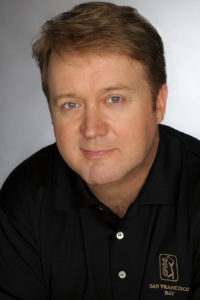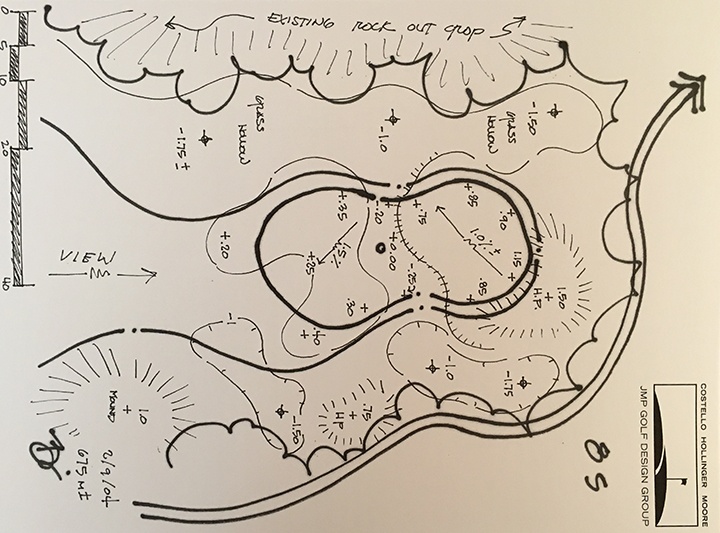 San Francisco native Brian Costello joined JMP in 1989 and became a principal of the firm in 1994. Among his most noteworthy designs are Whiskey Creek Golf Club near Washington, D.C.; Callippe Preserve Golf Club and Los Lagos Golf Club in California; Costa do Sauipe Golf Links and Fazenda da Grama Golf Club in Brazil; Belnatio Golf Club, Nasu Chifuriko Country Club, and Golden Palm Country Club in Japan; and Blackstone Exclusive Golf Club in Jeju, Korea.
San Francisco native Brian Costello joined JMP in 1989 and became a principal of the firm in 1994. Among his most noteworthy designs are Whiskey Creek Golf Club near Washington, D.C.; Callippe Preserve Golf Club and Los Lagos Golf Club in California; Costa do Sauipe Golf Links and Fazenda da Grama Golf Club in Brazil; Belnatio Golf Club, Nasu Chifuriko Country Club, and Golden Palm Country Club in Japan; and Blackstone Exclusive Golf Club in Jeju, Korea.
While on a business trip to Japan, a client invited me and several of the project mangers to play golf over the weekend at his club. As is customary after a round of golf, we took a shower and a soothing soak in the indoor hot springs.
This particular club also had an adjacent outdoor hot springs pool fully enclosed by a beautiful garden and cascading waterfall. Eventually the group gathered at the outside pool and sat up to our necks in the hot water.
We had been discussing different styles of waterfalls for the clients’ new eighteen-hole golf course, which was about halfway through construction. The hot springs’ waterfall had some interesting features, and with the assistance of one of our English-speaking associates, I was pointing out some of the features we wanted to try to emulate. We got into a rather animated discussion, until the chairman stood up out of the water and walked, completely naked, over toward the waterfall to point out a particular feature.
In short order, all of us were standing buck naked in front of the waterfall, in water now at our knees, pointing in deliberate fashion and carefully waving our arms, so as to not produce any exaggerated movement in the nether regions! It must have been quite a sight for any other club members watching the four of us gather in front this waterscape, blocking their view with our naked bodies. I can only imagine they must have been thinking, “What the heck is so interesting?”
Working in the Far East has resulted in many colorful experiences. For several days we had been canvassing a site on Jeju Island, in South Korea. In addition to struggling to walk the centerlines through some very difficult forested and heavily vegetated terrain, we were also trying to identify the best location for the clubhouse. Our local guide, with machete in hand, was quite helpful when we needed to clear waist-high brush and vines. He also cautioned us about the occasional loose lava boulders we had to traverse.
On the third day the client joined us to review our general findings and our recommendation for the location of the clubhouse. We retraced our steps across areas that we had previously cut our way through. As we were approaching the bluff where we had spent considerable time over the past few days, the guide went berserk. He waved his machete, ran up to the owner, and grabbed him to pull him backwards. The commotion caused everyone to pause and take notice.
“What is going on?” I asked the translator, who listened intently to the conversation. He then turned to me.
“He is warning the owner that there are several dens of very poisonous snakes right where he was going to step.”
I asked for clarification.
“There are poisonous snakes all over here,” he said. “These snakes are small, but they have enough poison to kill over twenty men!”
Traffic in Sâo Paulo is miserable. With a population of over 19 million people, there seems to be a perpetual traffic jam into and out of the city. As a result, there is a considerable amount of helicopters that crisscross the skies to move executives and the well-to-do.
We were working on a project, which, on a good day, was about an hour’s drive from the edge of the city. The client used his helicopter to go back and forth to the site frequently. I was able to use the helicopter on occasion and had a few thrilling incidents – landing on top of a downtown skyscraper with firefighters in full gear waiting for us to land on the postage-stamp landing pad. I was told the firemen were a requirement in case something went wrong with the landing.
One day, during lunch at the site, the client explained that his helicopter pilot had died in a motorcycle accident and he would be flying with his new pilot for the first time that afternoon.
“I worry about the health of my pilots,” he said in front of his new pilot, “because, even though I sit up front, if the pilot gets into trouble or has a heart attack, I don’t know how to fly.”
It was at that point the client informed me I’d be flying back to Sâo Paulo with him in the chopper at the end of the day.
When it came time to fly, we strapped into our seat belts. As I put on my headset, the client looked back at me and winked. I took a look at the pilot; he looked healthy.
We took off from the heliport in the sleek, brand-new craft and, after circling the site a few times to look at the shaping and the shadows being cast across the course, we turned toward Sâo Paulo for the twenty-five-minute ride. We leveled off, and shortly after that, I heard the pilot responding to the air traffic controller over the headsets. The pilot then adjusted something on the dashboard and then pointed just off to our left side, and then suddenly took a hard dive to the right.
“Oh my God,” I thought, “Is he having a seizure or heart attack?”
The pilot quickly regained control and then explained that he had made the dramatic maneuver to avoid a big flock of buzzards ahead of us.
“Hitting them would have been trouble,” he said in broken English, illustrating his point by making a motion with his hand rolling off toward the ground.
The pilot then asked us to help him look ahead because there were a lot of buzzards flying around at that time of year. I don’t think we blinked for the remainder of the trip!

